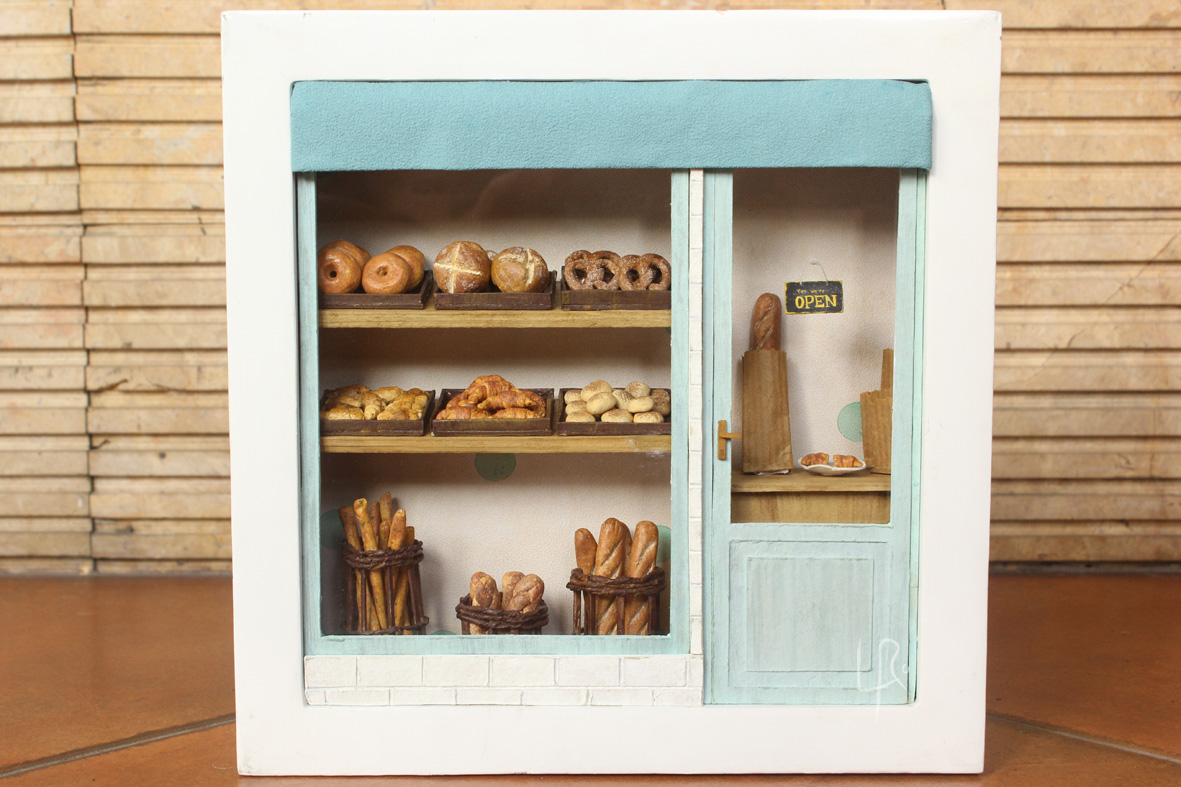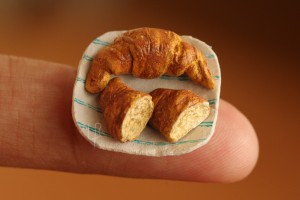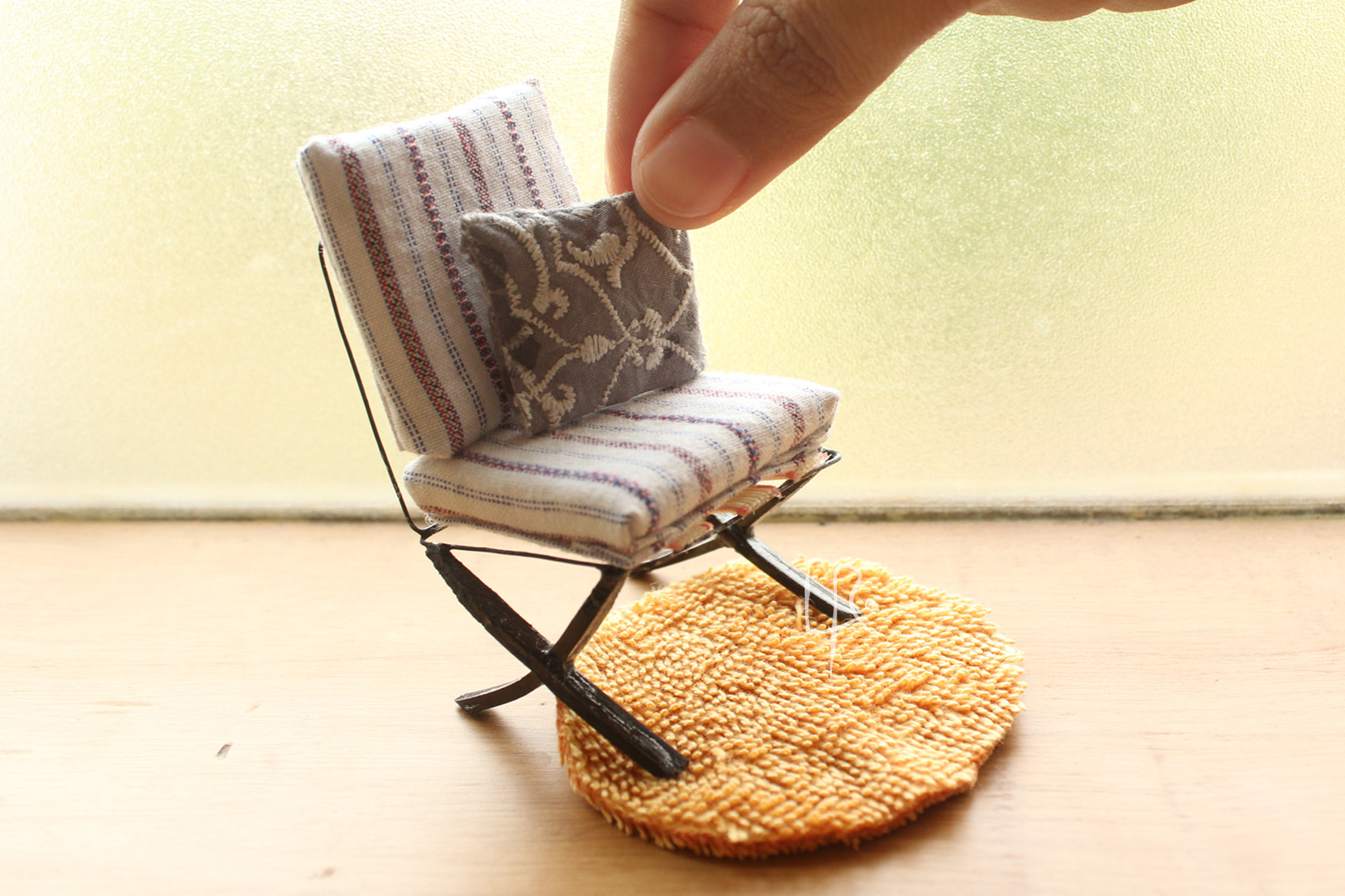Miniatures by Lintang Rahmawati
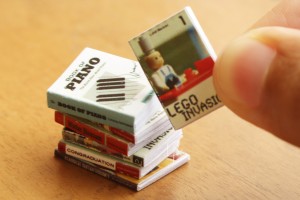 What’s your earliest memory with miniatures?
What’s your earliest memory with miniatures?
That was when I was a child, I had friend who owned a dollhouse and I used to come to her house with another friend to see it. At that time, I kept wanting to tell my dad to buy me one, but I knew a dollhouse cost a lot of money. Instead, I asked my mom to make some mini clothes for my doll, and I was so happy with the result. She’s great at making clothes.
How did you first get started making miniatures?
As Graphic Design students who took an Audiovisual class, my team and I got tasked with making a stop motion animation. We made some miniature household goods of clay for the indoor scene. I thought it was very interesting and the tiny items looked so cute.
Do you remember the very first miniature you made?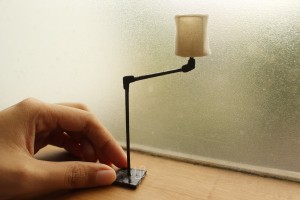
My very first miniature I made (despite the ones for that stop motion animation task) was a love letter scene which contained an opened notebook (to write the letter), an envelope, a pencil, and a heart-shaped sticker. They were all made of clay. It is still in my drawer.
What is your favorite type of miniature to make?
I mostly enjoy making a particular scene which consists of miniature household goods. That’s because I’m in love with dollhouses.
What is the most challenging miniature to make, and why is it so difficult?
I usually make miniatures from clay, so it is very challenging to make miniature furniture and household goods which require precise calculating and clay might be difficult to sculpt precisely. I have to be extra gentle to sculpt one or else I will ruin the whole clay work.
What advice would you give to new miniaturists?
Don’t be anxious to explore any technique and media on your miniature work, you’ll never know what’s better to fit your working style until you give it a try.
 Favorite miniaturists or artists/designers working in small scale?
Favorite miniaturists or artists/designers working in small scale?
I always admire the works of Stephanie Kilgast of @petitplat, Emily Boutard of @architectureoftinydistinction, and a Japanese artist who runs the Instagram account @minitama3. Their miniature works are awesome and the details are breathtaking.
What inspires you?
Sometimes, when I just look at my surroundings, it puts me at ease and the idea comes to me suddenly and I have to quickly write it down before it fades. On the other hand, seeing other artists’ works can be inspiring as well.
What is the most memorable miniature you have ever seen?
Tanaka Tatsuya is a Japanese artist who creates the most unique artwork I have ever seen. He doesn’t make miniatures; instead he repurposes everyday objects as set pieces or tools for teeny, tiny people in action, creating a whole new perspective of small scale art.
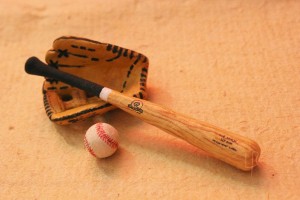 Why miniatures? What appeals to you most about what you do?
Why miniatures? What appeals to you most about what you do?
All I’ve been thinking about is miniatures… they are incredibly cute yet stunning. The point is miniatures are small stuff which require more complicated techniques than what the public thinks.
What’s to come from Lintang Rahmawati?
I’m starting to make a real dollhouse (but progressing on a single room first) using mixed media (clay, paper, card, wood, fabric, wire, bamboo stick, thread, etc.). It is challenging yet exciting to explore media I’ve never worked on. A collaboration with other artists may come up too.
Words you live by?
I got into Pablo Picasso’s words: “Every child is an artist, the problem is how to remain an artist once he grows up.”
I enjoy listening to instrumental music as well as playing musical instruments, especially the piano. I’ve been dreaming to make a fine miniature piano once I advance in this field.
What do you want miniature enthusiasts to know about you?
Plenty of friends told me that they love seeing my work, so I think handcrafted miniatures are bringing joy to some people. I’ll be pleased to hear that my work can make their day.
Indonesia-based Lintang Rahmawati lives in Malang, East Java. Have a look at the new miniatures featured on Liratelier Tumblr and @lintangrahma Instagram!
